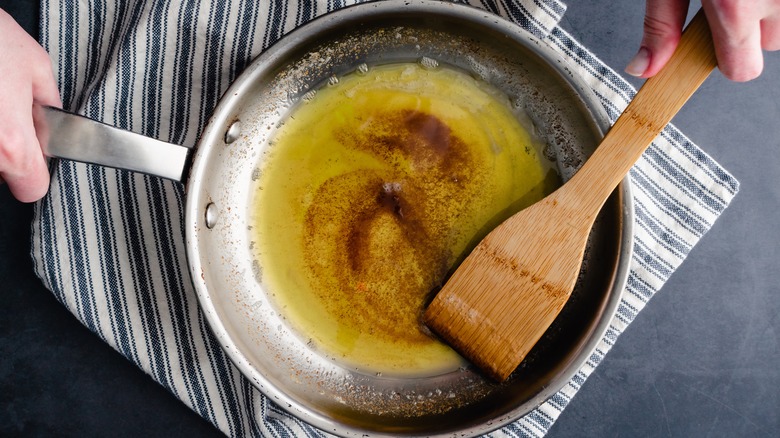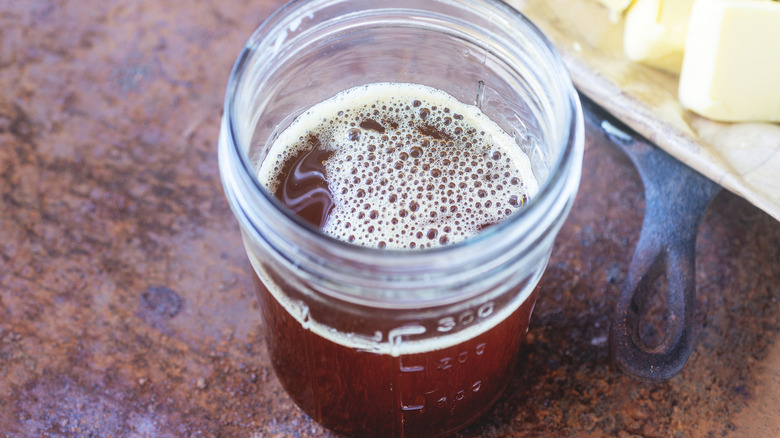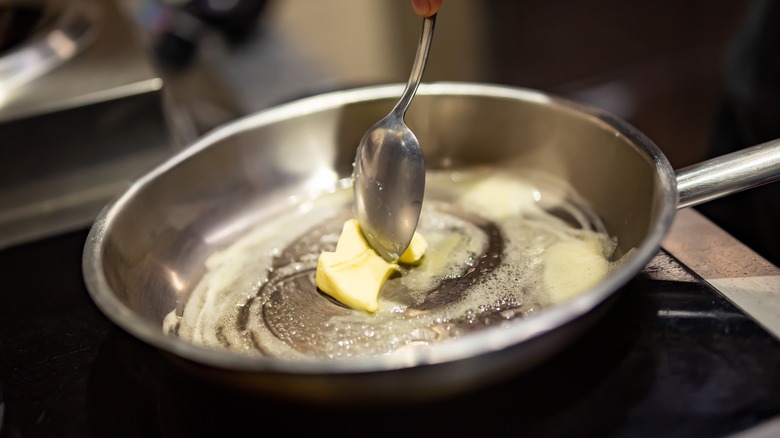The Easy Fix To Try Before Tossing Burnt Brown Butter
When you start using brown butter in cooking and baking, it opens up a whole new range of culinary possibilities. Brown butter works wonders as a pasta sauce base, while brown butter popcorn is the movie treat you never knew you needed. But it can be easy to go overboard and brown your butter too much, burning it and making it anything but delicious. At that point, you might think your only recourse is to throw it out and start over — but there's actually a fix that can potentially save it.
As soon as you notice your butter has started to burn, take it off the heat and strain it using a coffee filter, cheese cloth, or fine mesh strainer. This will remove the overcooked milk solids, leaving behind butter with all of that nutty browned flavor but none of the burnt taste. Since some recipes already ask you to strain your brown butter, you may find yourself doing this even when it's not burnt.
Milk solids work wonders for brown butter -- until they burn
In order to understand why this works, it's important to understand where the flavor of brown butter actually comes from. As butter melts, its milk solids separate from its liquid and float to the top, appearing as small white flecks. Those solids ultimately sink down and turn brown as they caramelize on the bottom of the pan. As this happens, it unlocks the nutty flavors brown butter is known for. But when the process goes too far, those same solids develop a burnt, acrid taste. If you're quick, though, straining the solids out will preserve the nuttiness imparted in the liquid while keeping the burnt flavor far away.
This method isn't foolproof, however. If the burnt milk solids have been in there too long, they might have imparted that bitter taste into the liquid. This is why you always want to taste your butter after it's strained and cooled down to make sure it's still good.
There are plenty of tricks to avoid burning brown butter
There are all sorts of things you should know to keep your brown butter from burning in the first place, too. Choosing a lighter-colored pan can make it easier to see when the butter is browned. Cooking on high heat can make it more difficult to control the process, burning the butter before you have a chance to stop it, so always brown butter on medium heat. Stirring continuously while cooking will help heat it evenly and keep the milk solids from sticking to the pan, leading to a more uniform browning. And adding in a little bit of liquid like lemon juice or white wine — or even a small piece of cold butter — right after removing it from the heat can help stop the browning process right where you want to.
You also shouldn't bother browning salted butter. It's more difficult to avoid burning than unsalted butter because it can foam up more than unsalted, making the color change harder to see. Since it also doesn't taste any better than unsalted brown butter, the only reason to use it is because it's potentially more visually striking as unsalted butter can produce more browned milk solids (which you might strain out anyway).


